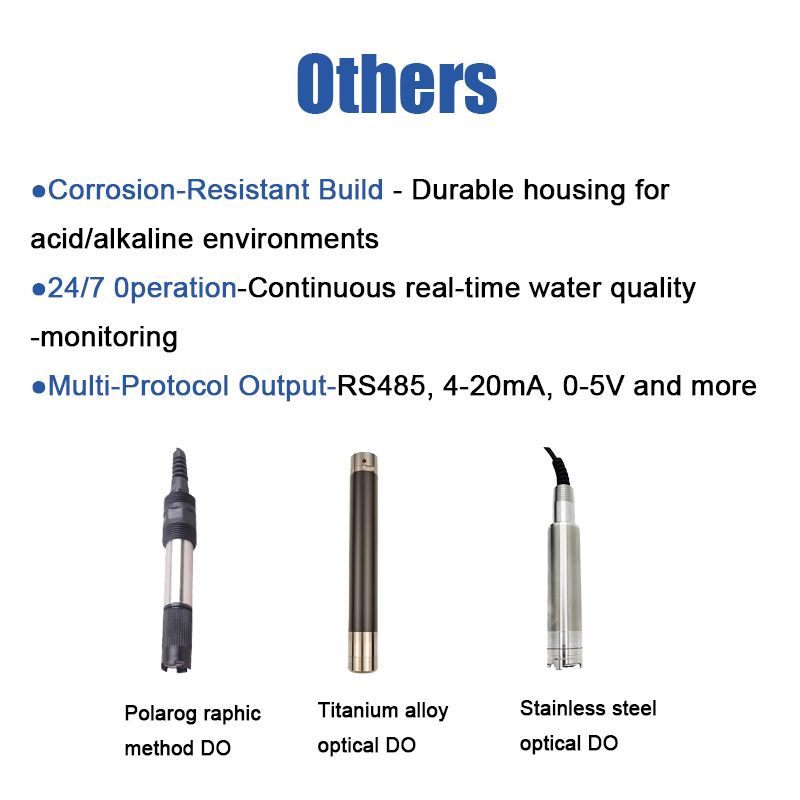Mexico City, 24 juli 2025 – I takt med att den globala vattenbristen intensifieras implementerar Mexikos jordbrukssektor optiska sensorer för löst syre (DO) för att optimera vattenbrukshanteringen, minska energiförbrukningen och förbättra fiskarnas överlevnad. Denna innovativa teknik har framgångsrikt använts på flera gårdar, vilket avsevärt förbättrar produktiviteten och miljömässig hållbarhet.
Tekniköversikt: Fördelar med optiska DO-sensorer
Traditionellt vattenbruk förlitar sig på manuell testning eller elektrokemiska sensorer för att övervaka nivåerna av löst syre, vilka kräver frekvent kalibrering och är benägna att kontamineras. Däremot använder optiska sensorer för löst syre fluorescenssläckningsteknik, vilket erbjuder viktiga fördelar:
- Hög noggrannhet: Mätområde på 0–50 mg/L med en felmarginal på endast ±0,1 mg/L (vid låga koncentrationer), vilket gör att den anpassar sig väl till Mexikos varierande vattenförhållanden.
- Lågt underhållsbehov: Sensorlocken håller i upp till 2 år utan frekvent omkalibrering, och självrengörande funktioner minimerar nedsmutsning.
- Realtidsövervakning: Snabb responstid (T90 < 45 sekunder), vilket möjliggör automatiserad styrning av luftningssystem.
Fallstudie: Implementering i mexikanska vattenbruksodlingar
I intensiva vattenbruksverksamheter i Michoacán och Sinaloa har trådlösa optiska DO-övervakningssystem implementerats, bestående av soldrivna bojar, luftningskontroller och molnbaserad programvara. Viktiga resultat inkluderar:
- Energibesparingar: Automatiserad luftningskontroll minskade elförbrukningen med 30 %.
- Förbättrad fisköverlevnad: Stabila syrenivåer (hållna vid 5–7 mg/L) sänkte dödligheten med 20 % och ökade foderomvandlingseffektiviteten med 15 %.
- Fjärrhantering: Jordbrukare får realtidsaviseringar via mobila enheter, vilket minskar responstiderna vid nödsituationer från timmar till bara 10 minuter.
Politik och ekonomisk påverkan
Den mexikanska regeringen har integrerat smart vattenkvalitetsövervakning i sin nationella utvecklingsplan för vattenbruk 2024–2030, och erbjuder skatteincitament för teknikimplementering. Till exempel rapporterade en tilapiadodling i Jalisco en ökning med 12 % av den årliga vinsten efter att ha installerat optiska sensorer, samtidigt som förlusterna från plötslig syrebrist minskade.
Framtidsutsikter: Experter rekommenderar att man kombinerar satellitdata (såsom termisk infraröd övervakning) med drönarteknik för att utveckla ett integrerat nätverk för hantering av "vatten-jord-klimat", vilket ytterligare främjar precisionsvattenbruk.
Vi kan också erbjuda en mängd olika lösningar för
1. Handhållen mätare för vattenkvalitet med flera parametrar
2. Flytande bojsystem för vattenkvalitet med flera parametrar
3. Automatisk rengöringsborste för vattensensor med flera parametrar
4. Komplett uppsättning servrar och trådlös programvara, stöder RS485 GPRS /4g/WIFI/LORA/LORAWAN
För mer vattensensor information,
vänligen kontakta Honde Technology Co., LTD.
Email: info@hondetech.com
Företagets webbplats:www.hondetechco.com
Tel: +86-15210548582
Publiceringstid: 24 juli 2025


